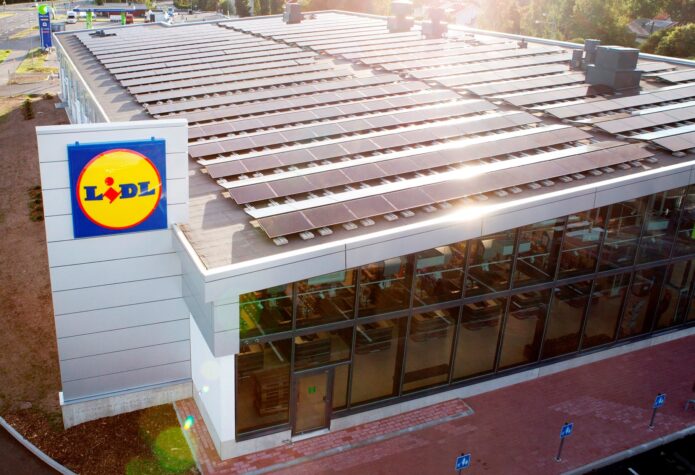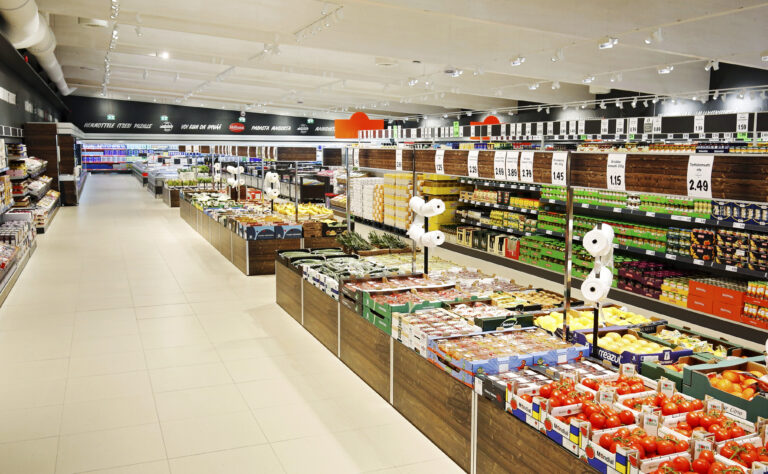Lidl building Nordic identity

The sluggish development of Finland’s economy in recent years has affected consumer behaviour. The grocery goods sector especially has felt the growing price-consciousness of customers. In this environment, German Lidl is shaping its Nordic identity.
In the aftermath of the global financial crisis, concerns about the overall cost of living in Finland have been increasing. These concerns also extend to the food retail sector.
In the current soft economic situation, price-quality ratio and price levels have become two of the most important criteria for Finnish consumers in choosing where they do their shopping.
This trend has forced grocery retailers to look for solutions that generate faster-than-market growth. Many have started to promote more affordable prices in their marketing campaigns. The German discounter Lidl is contributing to this change.
The chain established its first Finnish stores in 2002 and by 2015 had managed to attain a market share of approximately 9%. Today, Lidl operates more than 150 shops and employs over 5,000 people throughout the country.
The German discounter was met with scepticism when it opened its first stores, but an understanding of global trends and local needs seem to have dissolved some of the reservations against it.
Mr Simon Johnstone, Senior Market Analyst at the customer and retail consultancy Kantar Retail confirms this trend.
“Discounters like Lidl find the Nordic region attractive for three main reasons: it has faster economic growth compared to other regions in Europe, it has a growing immigrant population, and consumers are increasingly concerned about overall affordability”, says Mr Johnstone.
The most disruptive player
Lidl has been referred to as “the most disruptive retailer” in the Nordic region by several market research agencies for challenging local actors and intensifying price competition.
Consumer groups, however, have welcomed the additional competition in the relatively closed-off market.
Lidl’s expansion in the region has not been without setbacks, though.
When the discounter had to pull out of Norway in 2008 after only four years in the market, many argued that the foreign company had failed to understand customers’ expectations and values, and had never managed to establish a brand image strong enough to stand up to that of its local competitors.
Norway is the only market Lidl has had to exit thus far. The discounter had an easier time settling in Finland and seemed more aware of market-specific conditions.
An important step for Lidl was to incorporate local produce and brands into their range, marked with the Finnish flag to highlight the local origin of the products.
“Lidl does not have a homogenous growth strategy. This has enabled localisation of product offerings and increases their adaptability to the local markets. These aspects are crucial for Lidl’s plans going forward”, says Mr. Johnstone.

Lidl’s expanded stores have larger produce sections. Photo: Lidl Suomi Ky.
A Finnish identity
In 2010, Lidl started systematically modernising and expanding its shops in Finland with the aim of further increasing capacity and service levels. This expansion is supported by a 10-year loan of EUR 50 million from NIB, signed in 2015.
All branches will from now on include a bakery and a larger produce section. Other noteworthy features are new takeaway food offers and improved checkout and packing areas.
Lidl gave itself a quasi “Finnish” image and even poked fun at itself in its PR campaigns.

“Marketing is vital for shaping Lidl’s perception in new markets. As a result, Lidl tends to be one of the biggest advertising spenders within grocery retailing.”
Simon Johnstone
Senior Market Analyst at Kantar Retail. Kantar Retail is a consumer data insights and consulting agency, which is part of the Kantar Group, the data investment management division of WPP.
“Marketing is vital for shaping Lidl’s perception in new markets. As a result, Lidl tends to be one of the biggest advertising spenders within grocery retailing”, Mr. Johnstone points out.
Adapting to the expectations of local consumers seems to have created mutual benefits. The advanced store concept Lidl had to push in its Finnish branches is already seen as setting the standard for future stores in other geographies.
It is likely that as long as the economic situation remains challenging, price competition will continue to have implications on the short-term strategies of the country’s leading retailers.
Lidl knew to differentiate its business from the crowd, and this is now motivating its competitors to do the same by specialising their product offerings. New store concepts and expansions into online retailing are expected to move Finnish grocery retailing forward.

